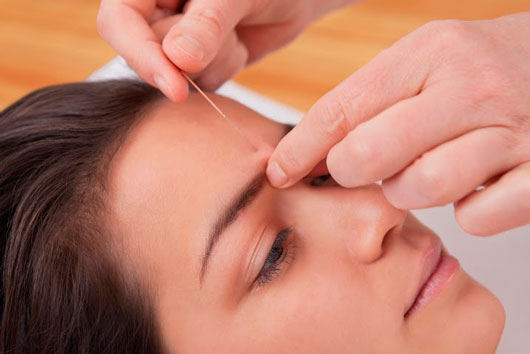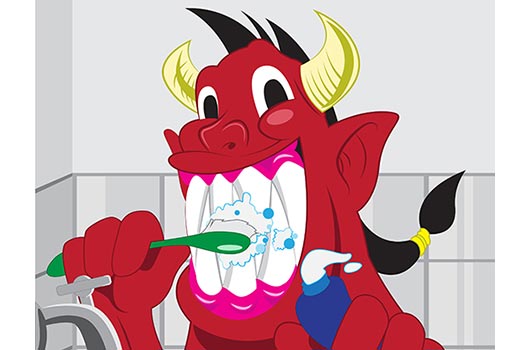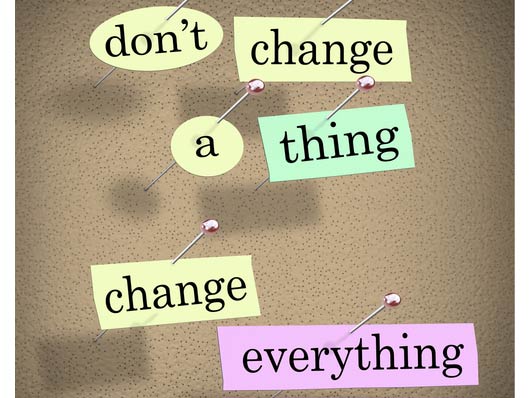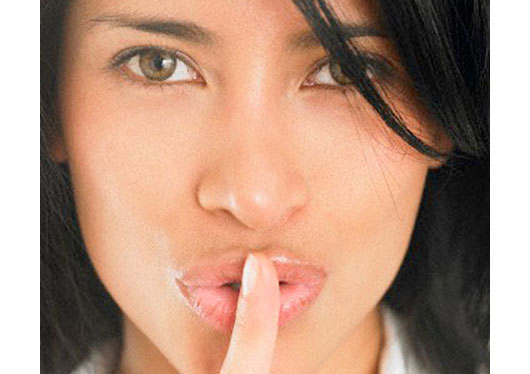
For some reason, most of us will never try acupuncture. Maybe it’s cultural prejudice: How do you know the needles are clean? It probably hurts! It’s a placebo: it doesn’t REALLY work! It’s a sham—it’s not scientific! No matter how effective, safe and affordable it may be, most of us scoff at the suggestion of allowing ourselves to be poked with dozens of needles.
Yet it’s no secret that the medical community is slowly embracing acupuncture, particularly for pain management and to ease the side effects of cancer treatments. The largest clinical study to date—published last September in the Archive of Internal Medicine—concluded that acupuncture is effective at treating chronic pain like headaches and osteoarthritis. This should be great news for the 42 million suffering chronic migraines and the 27 million living with osteoarthritis.
I was among the acupuncture skeptics. Until I tried it.
As I was leaving my first session as a happier self, I couldn’t help but to smile at the sign on the clinic door that read: Don’t Believe Everything You Think.
HOW IT WORKS
Unlike Western medicine, which isolates the patient’s symptoms to determine the cause of the disease, Chinese doctors couldn’t care less about the cause. For the past two thousand years, they have been busy studying patterns—how different elements move in relationship to one another.
So acupuncturists review a long list of signs—symptoms, but also personal habits, physiological and psychological characteristics—to determine the patient’s “pattern of disharmony” or “imbalance.”
This imbalance refers to the flow of Qi—pronounced chee. Qi, often translated as energy or life force, is always moving and transforming itself. If it’s blocked (stagnant) or weak (deficient), for example, it creates pain and discomfort. To restore harmony, the acupuncturist will needle certain points along the meridians (channels that carry Qi).
To visualize how Qi runs through the body, imagine a network of rivers (meridians) that bring water (Qi) to everything in a landscape (organs and tissue).
Read Related: Happy Cancer Chick: Comedy, Chemo & the Power of Positivity
WHAT TO EXPECT
Clear out two hours of your schedule—the interview process alone will take 30 to 45 minutes. Be prepared to talk about your chief complaint in detail. If you have chronic headaches, for example, be specific about the location, quality (pounding? dull?), and frequency.
The acupuncturist will also need to know your work and sleeping habits, appetite, diet, digestion, stools, levels of energy and concentration, your period, and your emotional well-being—are you feeling particularly anxious, sad or angry?
Before making a final diagnosis, the acupuncturist will also examine your pulse and tongue, and ponder other physical signs.
NEEDLING
This is perhaps the biggest myth buster: acupuncture isn’t done with needles like the ones used in syringes, but instead with stainless steel needles that are hair thin and very flexible.
Most needles will be inserted without you even knowing it. In a few cases, you may feel a pinch for half a second, then nothing. If a needle feels uncomfortable, the practitioner will remove it. “My goal is to treat you with as few needles, and few visits, as possible,” says Kevin Pinzone, a licenced New York acupuncturist. The needles will stay on for 20 to 45 minutes. Make sure you are comfortable enough to relax.
Notice what happens. I often feel my intestines growl and more than once I sobbed. During my first treatment I could not stop this very deep, inconsolable crying. I could not tell where it came from, but it was clearly part of the landscape.
And, in case you were wondering, all needles are new and tossed after each use. (They are not precious jewels, really: a box of 1,000 needles costs about $22.)
WHEN TO SEEK TREATMENT
Acupuncture is great for treating pain—whether it’s back pain, sciatica, headaches, migraines, muscular trauma or arthritis. It’s also effective in treating insomnia and women’s health issues, like fertility or menopause. “It’s excellent for digestion issues and emotional imbalances,” says Pinzone.
“We treat a lot of the side effects of cancer treatment drugs, like pain, nausea and vomiting,” says Pinzone. “But we also treat a patient with ALS (Lou Gehrig’s disease) and have greatly helped slow down the progression of his aphasia, his muscle atrophy, his drooling… His voice is now clearer and he has more strength in his upper body.”
A series of acupuncture treatments may take three to five sessions for something acute, and five to ten for something chronic. It doesn’t need to be expensive. Practitioners with years of experience may charge $140 for the first visit and $80 after that, but you can also find care at community clinics for $35, or less.
Once I started using acupuncture, I often found myself in conversation with others who have benefitted from it. Like me, almost all of them were initially skeptical, but soon became converts. And every one of them expresses the same sentiment: when it comes to acupuncture, don’t knock it until you’ve tried it.










